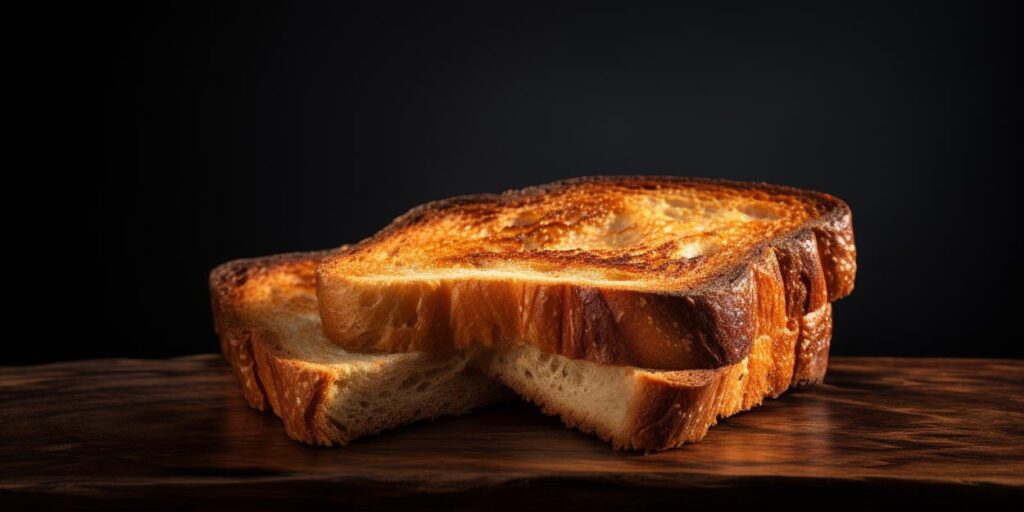
Bread is consumed worldwide, and is an important source of nutrients such as carbohydrates, protein, vitamins, and minerals. Toasting bread is a popular method of preparation which can alter the texture, taste, and nutrient content of bread. However, many people don’t know if toasting bread affects its nutritional value and healthfulness in comparison to non-toasted bread. In this article we will discuss what the effect of toasting bread is, and if toasted bread is healthier or less healthy.
What happens when we toast bread
When we toast bread, we create a checimal reaction which is known as Maillard browning. During this process, molecules are broken apart. The longer you toast or burn the bread, the greater the chemical reaction and changes to the bread.
Macronutrients
Due to the chemical reaction which happens when toasting the bread, the nutritional value of bread may change slightly. However, these changes are not significant and might not even be detectable. In order to change the nutritional value significantly, people would have to char the bread so severly, it would no longer be consumable. Toasting bread does change the water content of bread, but this doesn’t reduce the calories. Furthermore, the toasting can result in some interesting changes which will be further discussed below.
Glycemic Index (GI)
The glycemic index (GI) is a rating system which is used for foods containing carbohydrates. This index indicates to which degree carbohydrate rich foods can increase our blood sugar levels. Foods which contain a large amount of refined carbohydrate or sugar, are digested quickly and often score high on the glycemic index.
Studies have shown that toasted bread has a lower glycemic index than untoasted bread [1]. This means that toasted bread will not increase our blood sugar levels as much as untoasted bread. This difference is possible since toasted bread releases glucose into the bloodstream more gradually. Due to this, toasting can be slightly beneficial for people who would like to lose weight or have better control over their blood sugar level.
Disadvantages of toasting bread
Toasting bread may also have some disadvantages of which users should be aware. The toasting process may result in acrylamide [2]. Acrylamide is a chemical which is generated when certain foods are cooked at high temperatures. The darker the resulting surface color, the higher the concentration of acrylamide. Unfortunately, consuming high levels of acrylamide might have a negative effect on our health [3]. Therefore, it is often advised to toast it lightly, and not to a dark brown color.
References
- Burton, P., & Lightowler, H. J. (2008). The impact of freezing and toasting on the glycaemic response of white bread. European Journal of Clinical Nutrition, 62(5), 594-599.
- Granby, K., Nielsen, N. J., Hedegaard, R. V., Christensen, T., Kann, M., & Skibsted, L. H. (2008). Acrylamide–asparagine relationship in baked/toasted wheat and rye breads. Food Additives and contaminants, 25(8), 921-929.
- Semla, M., Goc, Z., Martiniaková, M., Omelka, R., & Formicki, G. (2017). Acrylamide: a common food toxin related to physiological functions and health. Physiological Research, 66(2), 205.
Author


